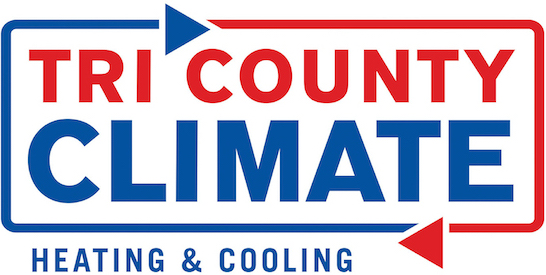
Would you believe that more than one-half of your home’s energy costs are from your heating and cooling? That’s why it’s critical to maintain an energy-efficient HVAC system.
Furnace efficiency standards were last modified to an Annual Fuel Utilization Efficiency (AFUE) rating of 80% in 2015. This rating system illustrates how effective your furnace is at turning natural gas into heat. An AFUE rating of 80% means your furnace will waste about 20% of the fuel it uses while producing heat.
In 2022, President Biden recommended new energy-efficiency standards for residential gas furnaces that would substantially decrease emissions, save money and promote sustainability.
The updated standards are estimated to:
- Save Americans $1.9 billion annually.
- Lower carbon emissions by 373 million metric tons and methane emissions by 5.1 million tons over 30 years, the equivalent of what 61 million homes emit annually.
Starting in 2029, the updated rule would require all new gas furnaces to feature AFUE ratings of 95%. This means furnaces would convert nearly 100% of the gas into usable heat.
So what does all of this mean for your existing furnace in 2023? For the time being, very little, as the proposed rule won't go into effect until 2029 at the earliest and doesn’t affect furnaces that are already in use.
But if you are considering furnace replacement in soon, highly energy-efficient furnaces are ready and available. Learn how these furnaces can help you save on energy bills now.
Guide to Condensing Furnaces
How Condensing Furnaces Work
A condensing furnace is a type of heating system that uses a secondary heat exchanger to trap wasted heat from the furnace's exhaust gases. This reduces the quantity of energy wasted, enhances energy efficiency and lowers CO2 emissions. It also will take less natural gas to create the same volume of heat compared to other types of furnaces.
How Condensing Furnaces Differ from Non-Condensing Furnaces
The main difference between a condensing furnace and a non-condensing furnace is that the former uses a secondary heat exchanger to capture any wasted heat from its exhaust gases, while the other does not.
Expected Longevity of a Condensing Furnace
The life span of a condensing furnace is dependent on the brand, model and other factors. Usually, a condensing furnace will last between 10-20 years with sufficient maintenance and regular service. If your heating system doesn’t have regular furnace maintenance, the equipment may struggle to perform as well, ultimately failing earlier than anticipated.
Why Condensing Furnaces Are More Expensive
Usually, condensing furnaces type of system is significantly more efficient than traditional furnaces, as it only utilizes the minimum amount of energy required to heat your home, saving you money in the long run.
Many variable-speed furnaces are condensing furnaces, although a handful are available in non-condensing models with lower AFUE ratings. In order for a furnace to be classified as a condensing furnace, it must offer an AFUE rating of 90% or higher.
Do Variable-Speed Furnaces Run Nonstop?
A variable-speed furnace doesn’t operate all the time. Rather, it runs at different speeds based on the temperature in your Bend home as well as the amount of energy it uses to maintain that temperature.
When sufficient energy is demanded to maintain your preferred temperature level, the furnace will switch to a higher speed to manage the higher demand. Precise fan speeds offer more efficient heating in your home while also providing quieter operation.
Guide to Two-Stage Furnaces
Two-Stage Furnaces: What They Are and How They Work
A heating system with two settings of operating - high and low - is called a two-stage furnace. When set to the low stage, the furnace operates at a reduced capacity to help maintain the chosen temperature at your home more efficiently. During the high stage, the furnace will instead run at maximum capacity to satisfy demands for greater heat. With a two-stage furnace, you can maintain improved energy efficiency and comfortable temperatures all across your home.
While two-stage furnaces are very efficient, not all all models are condensing furnaces.
Does a Two-Stage Furnace Operate All the Time?
A two-stage furnace should not run constantly. In the low stage of operation, the furnace operates at limited capacity in order to maintain a preferred temperature more efficiently within your home. When additional energy is needed to sustain the set temperature, the unit switches to its high stage and operates at full capacity. Because of this, two-stage furnaces are proven to help reduce energy costs without operating constantly.
Contrasting Two-Stage and Variable-Speed Furnaces
Two-stage furnaces have two stages of functionality, low and high. During the low stage, the furnace runs at reduced capacity in order to maintain a desired level of comfort within your home. When additional warmth or cooling is necessary, the furnace will shift to its high stage and operate at full capacity.
Variable-speed furnaces, meanwhile, can operate at multiple speeds in order to keep a comfortable temperature at home. Such precise functionality can also help reduce energy costs, as it is not constantly running on full power like many two-stage furnaces do.
Differences Between One- and Two-Stage Furnaces
One-stage furnaces have a single stage motor and operate either at full capacity or not at all. Consequently, the furnace is always running in order to maintain a desired level of comfort at home.
Two-stage furnaces, on the other hand, have two stages of operation, low and high. During the low stage, the furnace runs at lower capacity in order to maintain the desired temperature more efficiently. When more warmth or cooling is necessary, the furnace will switch to its high stage and operate at peak capacity.
Make Your Furnace Installation Appointment with Tri County Climate Control LLC Today
It takes experience and dedication to stay up to date about furnace technology advancements. That’s why Tri County Climate Control LLC professionals are here to help with a free, no-pressure quote for furnace installation. We’ll assess your home, your heating requirements and your budget before helping you find the right solution. Contact us at 541-546-1393 to get started today!

